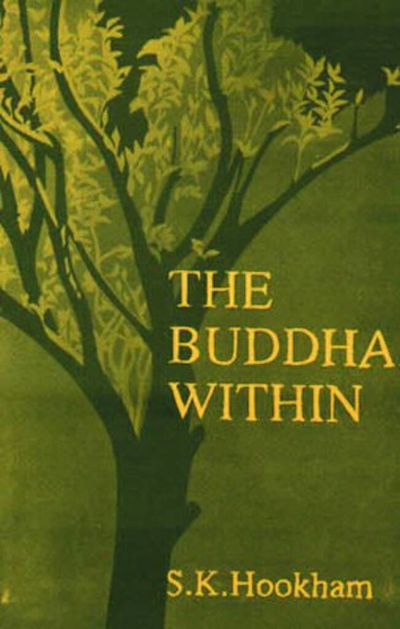- Acknowledgementsxiii
- Yogin Khenpo Tsultrim Gyamtso's Spontaneous Verses on the Subject of Rangtong and Shentongxv
- Chapter 1: General Introduction1
- The Omnicient Dolpopa's Prayer that Unties the Vajra Word Knots5
- Section One–The Issues9
- Chapter 2: Introduction to the Rangtong-Shentong Distinction11
- 2.1 The Origin and Significance of Buddhist Commentarial Traditions11
- 2.2 The Rangtong-Shentong Distinction13
- 2.3 The Meaning of Rangtong14
- 2.4 The Meaning of Shentong15
- 2.5 The Importance of the Rangtong-Shentong Distinction16
- Chapter 3: Emptiness from the Shentong Point of View19
- 3.1 Progressive Stages of Meditation on Emptiness19
- 3.2 The Final Stage–Shentong (Yogacara Madhyamaka)22
- 3.3 No Shentong Without a Proper Understanding of Rangtong26
- 3.4 Problems of Definitions of Terms29
- Chapter 4: The Shentong View of Absolute Reality33
- 4.1 Buddhajnana33
- 4.2 Inseparable Qualities37
- i. Inseparable Qualities of the Dharmakaya38
- ii. The Concept of Uncompoundedness44
- iii. Inseparability and the Spontaneous Existence of the Buddha Qualities47
- 4.3 Buddha Activity51
- Chapter 5: Means of Apprehending Absolute Reality57
- 5.1 Faith57
- i. Faith and Buddhajnana57
- ii. Faith and Direct Experience60
- iii. Direct Experience as Valid Cognition63
- 5.2 Non-conceptuality (nisprapanca)65
- i. Nisprapanca as Awareness Experienced in Meditation65
- ii. Nisprapanca as Freedom from Extremes71
- ii. Nisprapanca as Non-conceptuality in the RGV (1.9)73
- ii. Nisprapanca as in the Tantras77
- 5.3 The Two Realities and the Two Visions79
- i. Satya79
- ii. Paramarthasatya79
- iii. Samvrtisatya81
- iv. Ultimate Reality is not Dependent Arising82
- v. Own Nature and Other Nature (Svabhava and Parabhava)82
- vi. The Two Realities Inseparable83
- vii. The Two Senses of Manifestation and Emptiness85
- viii. The Importance of the Distinction85
- ix. The Relationship Between the To Realities87
- x. The Two Visions–Precisely What Is and the Extent of What Is (Yathavadbhavikata and Yavadbhavikata)87
- Chapter 6: The Nature of Beings91
- 6.1 Base, Path, and Fruit91
- 6.2 Tathagatagarbha91
- i. The Shentong and Rangtong Approaches Compared94
- ii. The Term "Tathagatagarbha"99
- 6.3 Self100
- 6.4 Gotra104
- i. The "Cut-off" Gotra and the Three Yanas105
- ii. Gotra as both Cause and Emptiness108
- Chapter 7: The Third Dharmacakra: Neyartha or Nitartha113
- 7.1 The Third Dharmacakra113
- i. The Three Dharmacakras113
- ii. The Third Dharmacakra as Nitartha114
- iii. Kongtrul's Distinction Between the Tow Kinds of Nitartha Sutra of the Third Dharmacakra117
- iv. Dolpopa's Anlaysis121
- v. The Third Dharmacakra is Not Cittamatra122
- 7.2 Neyartha and Nitartha124
- i. Rangtong Explanations of Neyartha and Nitartha124
- ii. The Terms "Neyartha" and "Nitartha"126
- iii. The Ratnagotravibhaga–Neyartha or Nitartha?127
- Section Two–Historical Background133
- Chapter 8: The Shentong Tradition135
- 8.1 The Jonangpas135
- i. The Jonangpa Lineage135
- ii. Some Opponents and Supporters of Shentong136
- iii. The Mountain Dharma–Ocean of Nitartha (Ri chos nges don gya mtsho, RC)136
- iv. Comparison With Later Shentongpas140
- v. The Essence of the Controversy141
- vi. Shentong is Secret Oral Instruction142
- 8.2 Sources of Shentong143
- i. The Tibetan Inheritance143
- ii. Some of Dolpopa's Indian Sources of Shentong147
- iii. Other Views on the Indian Sources of Shentong149
- iv. The Brhattika151
- v. Nagarjuna's Stotra and Karikas154
- vi. How Shentong Relates to Later Developments of Buddhism in India156
- vii. The Term "Great Madhyamaka"157
- viii. Tantric Shentong159
- 8.3 Kongtrul and the Rimay Tradition161
- i. Kongtrul161
- ii. The Rimay Tradition162
- Chapter 9: Traditions of Interpretation of the RGV and RGVV165
- 9.1 Introduction to the Ratnagotravibhaga and Ratnagotravibhagavyakhya and Associated Traditions.165
- i. Authorship and Rediscovery165
- ii. Maitreya166
- iii. The Importance of the Maitreya-Asanga Connection167
- iv. The RGV as a Synthesis of the Tathagatagarbha Sutras and the Prajnaparamita Sutras169
- v. The Vyakhya (RGVV)171
- vi. Transmission to Tibet171
- 9.2 Matters Arising from the Introduction to Kongtrul's Commentary on the RGV. 172
- i. The Two Tibetan Transmission Lineages of the RGV172
- ii. Questions Arising from Kongtrul's Commentary173
- iii. Other Commentators Not Mentioned in the Initial Praises175
- iv. Gampopa and the Sutra and Tantra Mahamudra176
- v. Rangjung Dorje and the Mahamudra-Dzogchen Synthesis178
- Section Three–A Shentong Interpretation of the RGV and RGVV and a Translation of Kongtrul's Introduction to His RGV Commentary179
- 'Chapter 10: A Shentong Interpretation of the RGV and RGVV–A Paraphrase With Comments181
- 10.1 The Title and its Implications 181
- 10.2 General Introduction to the Seven Vajra Bases 182
- 10.3 Vajra Bases 1–3: The Three Jewels 186
- 10.4 Vajra Base 4: The Dhatu (Element)192
- Causes and Conditions for Purification192
- The Four Paradoxes193
- The Three Reasons196
- The Element Arranged in Ten Points198
- The Nine Examples221
- The Essence of the Doctrine229
- The Purpose of the Instruction233
- 10.5 Vajra Base 5: Enlightenment235
- 10.6 Vajra Base 6: Qualities249
- 10.7 Vajra Base 7: Activity252
- 10.8 The Benefits260
- Chapter 11: Translation of the Introduction to Kongtrul's RGV Commentary263
- Chapter 12: Conclusion289
- Appendix 1: Works by Western Scholars295
- Appendix 2: Prakrtisunyata, Svabhavasunyata and Parabhavasunyata in Rangtong and Shentong Terms299
- Appendix 3: Further Details on the Three Svabhava and the Three Kinds of Emptiness as Found in the SNS303
- Appendix 4: The Sandhinirmocanasutra: Résumé 311
- Appendix 5: Some Points of Comparision Between Rangtong Commentators on RGV317
- Appendix 6: The Five Dharmas of Maitreya325
- Abbreviations327
- Notes329
- Conventions Used363
- Glossary of Terms364
- Bibliography367
- Index397
- Tables
- 8.1152
- 8.2153


